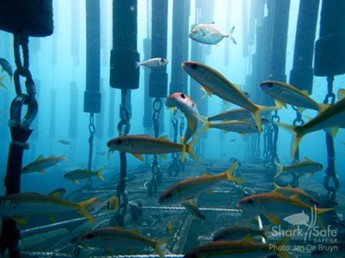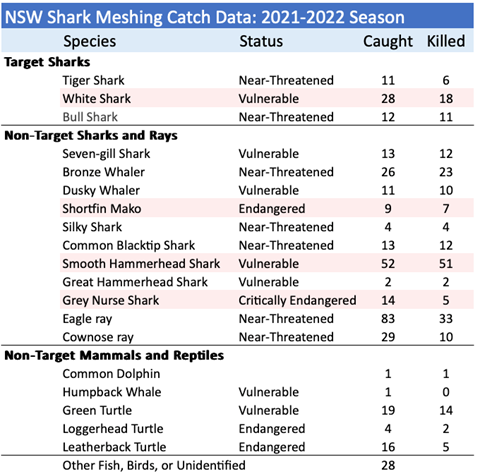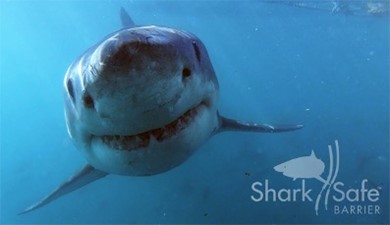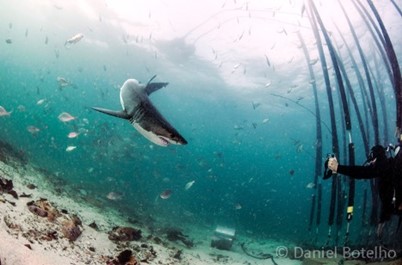SharkSafe Barriers
An eco-friendly alternative to lethal shark control measures

While rare, shark attacks –and fear of shark attacks—can have a profound effect on local communities, marine recreation-based economies, and marine biodiversity. For areas dependent on ocean recreation as a main source of revenue such as beach towns in South Africa, Brazil, New Caledonia, and Reunion Island, shark attacks can have extreme, adverse effects on local economies.
In an effort to address public safety concerns and protect local tourism economies, hundreds of public and private beaches have resorted to managing shark-human conflicts with costly, often ineffective and ecologically damaging methods: shark nets and drumlines.
The above measures pose direct threats to shark populations, including those listed as endangered, threatened or protected species. Both shark nets and drumlines have been shown to negatively impact marine biodiversity beyond sharks, as they result in significant marine bycatch, indiscriminately trapping a host of non-target species including whales, dolphins, turtles, fish, birds, and other harmless marine animals. And yet, and some shark attacks still occur. SharkSafe Barriers provides better option – for people and sharks.

THE COMPANY
SharkSafe Barriers was founded in 2014 in South Africa, by Dr. Sara Andreotti, a marine biologist specializing in white shark research. The team developed a shark-specific and nature-inspired technology with demonstrated effectiveness – publishing results in 5 peer review scientific journals. In trials, none of the observed sharks (84 white sharks and 41 bull sharks) crossed the barrier, despite being heavily motivated by chum.
Through the use of patented magnet-based technologies, the SharkSafe Barrier safely repels predatory sharks, protecting surfers, swimmers and other ocean users while avoiding harm to sharks or other marine wildlife, offering a cost-competitive and non-lethal method of protection for coastal communities consistently affected by shark attacks.
The SharkSafe BarrierTM completed the Oceanhub Africa business accelerator program, was the recipient of the prestigious NSTF-Lewis Foundation Green Economy Award at the National Science and Technology Forum, labelled as a Solar Impulse Efficient Solution in 2020, and was one of the finalists in the Eco-Responsible Tourism category of the France Tech4Island Award. Recently the company was recognized by the World Economic Forum's platform UpLink as one of its top ocean innovators.

THE INVESTMENTS
CI Ventures is investing a total of $250,000 USD, with an initial tranche of $150,000 USD for working capital to support pilot projects focused on testing the SharkSafe Barrier technology on different sea substrates and conditions, so that it can ultimately be installed everywhere it is needed. CI Ventures has also set up a $100,000 in a flexible draw-down facility to support the team in covering site-scoping costs, required for developing contracts with potential clients.
THE IMPACT
Globally, the SharkSafe Barrier has the potential to reduce harmful impacts to marine biodiversity while supporting the interests of the broader marine tourism industry.
On Sharks:
CSIRO researchers estimate that the eastern Australia White Shark population has fewer than 1,000 adults left – and 81 died in New South Wales shark nets in the last 5 years.[1],[2] From September 2020 through April 2021, ~2 listed endangered species were killed each week. Replacing lethal shark control measures with the SharkSafe Barrier promotes marine conservation efforts, especially with regard to threatened shark species.
On Biodiversity:
Beyond sharks, replacing lethal shark control measures protects other marine megafauna commonly caught as bycatch (dolphins, whales, turtles, etc.). The SharkSafe Barrier is highly selective to large, predatory sharks, and other animals, such as seals and dolphins, can freely pass through without risk of entanglement. The risk of entanglement is so low, that in future, the management team plans to explore how to incorporate their design in fishing gear to minimize whale entrapments. There is also potential for the barriers to act as artificial reefs, increasing local biodiversity, biomass, and coral cover.
On Eco-Tourism
While shark attacks have a negative effect on local tourism, shark-centric marine tourism is lucrative for coastal economies. Shark watching generates over USD $314M and supports over 10,000 jobs each year. As the ecological and economic value of healthy shark populations are increasingly recognized, more areas targeting shark conservation (shark sanctuaries) are being established around the world, including almost 13 million km2 in the last 2 years. Declining shark populations directly threaten this industry, and thus the financial incentives of shark conservation. Eco-friendly beach protection measures can protect future ocean-based tourism from both shark-human conflict and improved shark-centric eco-tourism.
As Jacques Cousteau once said, “We only protect what we love, we only love what we understand, and we only understand what we are taught.” By reducing fear and incidence of trauma, SharkSafe Barriers opens the door for conversations and tangible efforts to promote marine education, eco-tourism, and shark conservation. The team is already discussing collaboration opportunities with non-profits, outreach groups, and aquariums to promote education and understanding around the importance of co-existing with sharks.

[2] https://www.csiro.au/en/research/animals/marine-life/sharks/can-white-shark-numbers-be-estimated